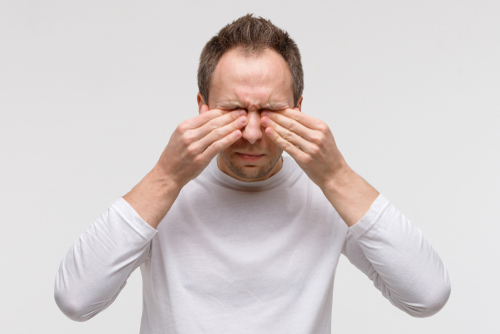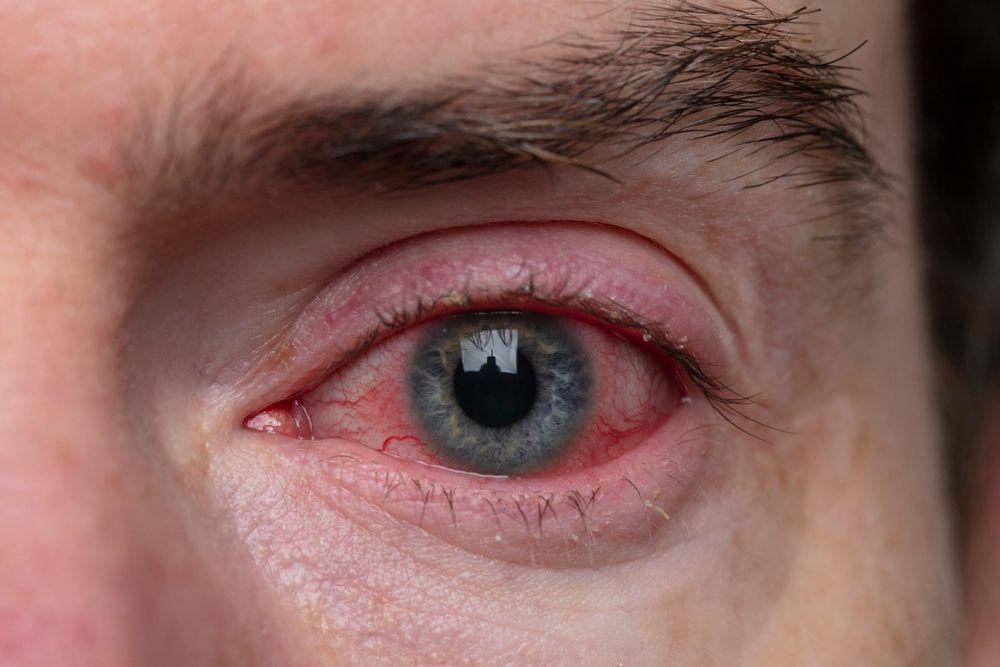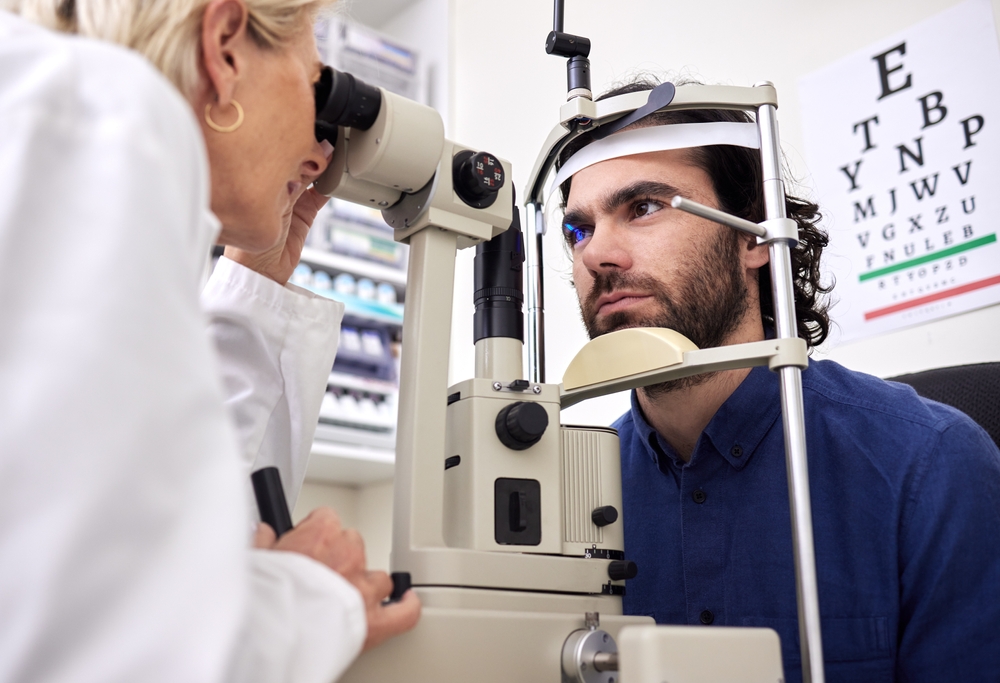Occasional eye irritation is a common experience. However, frequent eye irritation may be indicative of ocular dryness.
While environmental factors can cause temporary dryness of the eyes, chronic dry eye, clinically known as dry eye syndrome, is a common eye condition. Keep reading to earn five signs that may indicate that dry eyes are the reason your eyes are irritated!
What is Dry Eye Syndrome?
Dry eye syndrome (DES) occurs when there’s a problem with your tear film. The tear film is the layer of tears that covers your eye’s surface each time you blink.
Your eyes can become dry when your tears evaporate too quickly, which can happen in very dry or hot environments. However, dry eyes can also result from your eyes not producing tears correctly.

This issue in tear production can lead to evaporative dry eye, one of the most common causes of dry eye syndrome. Your eyes produce three key components for tears: mucus, water, and oils.
A healthy tear film needs a balance of all three. When your eyes struggle to produce one component, it creates an imbalance that makes it harder for your tears to perform their job, like washing away debris, keeping your eyes lubricated, and preventing harmful bacteria buildup.
Evaporative dry eye often happens when the glands in your eyelids that produce oils become clogged. These oils form the outer, protective layer of your tear film.
Without enough oil, your tears don’t have the protection they need, so they evaporate too quickly and can’t stay on your eye’s surface long enough to keep it moist. If your eyes frequently feel irritated, it’s important to see an eye doctor.
How Do I Know if I Have Dry Eyes?
The best way to know whether or not you might be experiencing dry eye syndrome is to have an evaluation by your eye doctor. They will be able to determine the root cause of your symptoms and develop a treatment plan.
Here are some signs that you might have dry eye syndrome:
Your Eyes Are Red
Persistent redness of the eyes is a common symptom of DES. When your eyes lack sufficient moisture, the blood vessels on the eye’s surface can become more visible, giving your eyes a reddish appearance.
This redness might be more noticeable after long periods of eye strain, such as after reading or working on a computer for extended periods. If you find your eyes are frequently red, especially without allergies or lack of sleep, it could be a sign of dry eye syndrome.

Your Eyes Burn or Sting
A burning or stinging sensation in your eyes is another typical indicator of dry eye syndrome. This discomfort occurs because the lack of proper lubrication causes increased friction on the eye’s surface.
You might notice this feeling more intensely when you first wake up in the morning or towards the end of the day. The feeling can range from mild irritation to a more intense burning sensation, and it may worsen in windy or dry environments.
It Feels Like There’s Something in Your Eyes
Many people with dry eye describe a feeling of grittiness or the sensation that something is stuck in their eye, even when there’s nothing there. This feeling, often referred to as “foreign body sensation,” is caused by the increased friction between your eyelid and the surface of your eye due to inadequate lubrication.
You might find yourself blinking more often or rubbing your eyes to try to alleviate this discomfort, but this can sometimes make the problem worse.
You Have Increased Tearing
Dry eyes can sometimes lead to excessive tearing. This occurs because your eyes, sensing the dryness, may produce an abundance of tears as a reflex action.
However, these reflex tears are often primarily water and lack the proper balance of oils and mucus needed for effective lubrication. As a result, these tears evaporate quickly, leaving your eyes feeling dry again and potentially leading to a cycle of dryness and tearing.
There’s Mucus Around Your Eyes
An increase in mucus production around your eyes can be a sign of dry eye syndrome. When your eyes are dry, they may produce more mucus as a protective mechanism.
This can result in a stringy or thick discharge, especially noticeable in the corners of your eyes or along your lash line. You might find yourself having to clean this mucus from your eyes more frequently, particularly in the morning.
While some eye discharge is normal, an excessive amount could indicate dry eye syndrome.
How Do You Treat Dry Eyes?
Treating dry eyes is important, as this condition can lead to more than just discomfort. If left untreated, dry eyes can increase your risk of eye infections, corneal abrasions, and corneal ulcers, which may result in scarring.

Corneal scarring, in turn, can potentially cause vision loss. The most effective approach if you’re experiencing dry eye symptoms is to consult an eye doctor.
Your eye doctor can perform a tear analysis to determine if you have dry eyes and identify which tear components you might be lacking. Based on this evaluation, they can recommend appropriate treatments, which may include:
- Over-the-counter eye drops
- Nutritional supplements
- Home remedies to alleviate symptoms
- Professional in-office treatments
- Prescription medications
Each of these options targets different aspects of dry eye syndrome, and your eye doctor can create a personalized treatment plan based on your specific needs.
Are you experiencing symptoms of dry eye syndrome? Schedule an appointment at Williamson Eye Center in Baton Rouge, LA, today!



